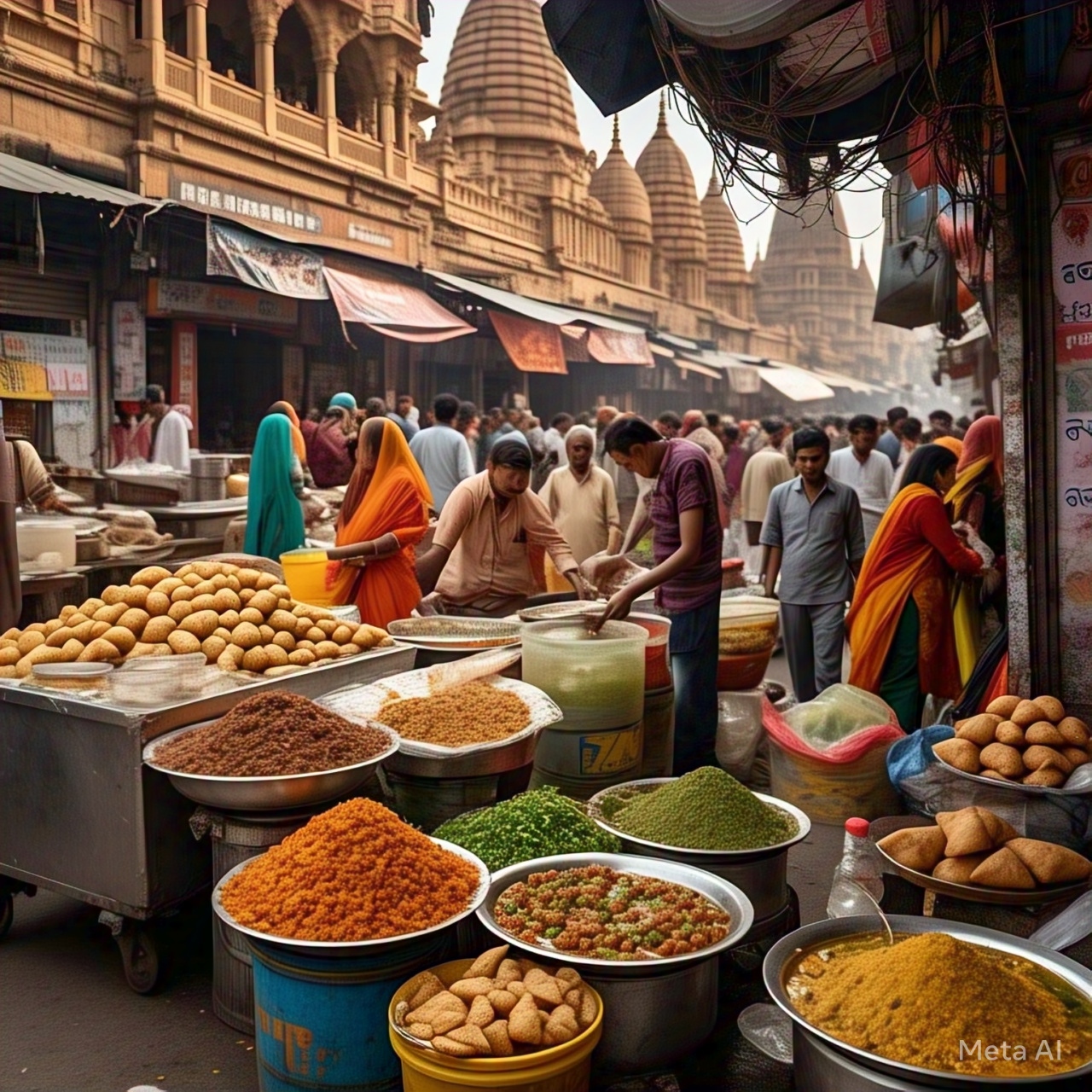Ayodhya Food Guide
Ayodhya, the birthplace of Lord Ram and a major Hindu pilgrimage site, isn’t just known for its spiritual charm—it also has a flavorful and deeply rooted food culture that reflects the simplicity and sattvic lifestyle of the land. From temple prasad to bustling street-side stalls, Ayodhya offers a culinary experience that is both sacred and satisfying.If you’re planning a visit, this Ayodhya Food Guide will walk you through the must-try local dishes, sweets, and street food that define the city’s unique culinary character.

Ayodhya Food Guide
1. Sattvic Thali – The Pure Taste of Devotion
In Ayodhya, many local restaurants and ashrams serve sattvic food, which is free from onion, garlic, and non-vegetarian ingredients. A typical thali includes:
- Sabzi (seasonal vegetables)
- Jeera Rice or Khichdi
- Puri or Chapati
- Dahi (yogurt)
- Pickle and Papad
- Kheer or Halwa for dessert
Where to Try: Ram Rasoi Bhojanalaya, Annapurna Bhojanalaya, or local temple kitchens (many offer prasad bhojan).
2. Aloo Tikki Chaat – The Street Food Star
No street in Ayodhya is complete without the sizzle of Aloo Tikki Chaat. Crispy potato patties served with tangy tamarind chutney, spicy green chutney, and curd—it’s a deliciously messy indulgence.
Where to Try: Near Ram Ki Paidi, Hanuman Garhi, or around Ram Janmabhoomi markets.
3. Kachori-Sabzi – A Divine Morning Delight
A popular breakfast dish, kachoris are deep-fried bread stuffed with moong dal or spices, served with a piping hot potato curry. It’s both filling and flavorful.
- Best Time: Early morning, around 7–10 AM
- Where: Local stalls near Naya Ghat and Subhash Nagar.
4. Desi Ghee Sweets – Sweeten Your Pilgrimage
Ayodhya is home to many traditional sweet shops that specialize in sweets made with pure desi ghee. Don’t miss:
- Balushahi
- Peda (offered as prasad)
- Laddoos
- Imarti (similar to jalebi but richer)
Where to Try: Ramnagari Misthan Bhandar, Ram Lala Sweets, and shops near Hanuman Garhi.
5. Khichdi & Aloo-Tamatar – Temple-Style Simplicity
This humble combo is often part of temple offerings and community meals. It’s light on the stomach, nourishing, and spiritually satisfying.
Where: Served in many ashrams, mutts, and Ram Mandir Bhojanalayas, especially during festivals.
6. Poori-Halwa – A Festive Combo
A classic offering during Ram Navami, this combo includes fluffy puris, suji (semolina) halwa, and aloo sabzi. It’s simple yet delicious.
Where to Try: Community kitchens during festivals or in small eateries near the ghats.
7. Lassi & Thandai – Cool Off the Devotional Way
Ayodhya’s lassi is thick, creamy, and topped with malai (cream). During summers or religious festivals like Mahashivratri, try Thandai flavored with fennel, rose, and dry fruits.
Where to Try: Lassi shops around Ram Janmabhoomi Path, near Naya Ghat.
8. Samosa & Pakora – Tea-Time Favorites
Perfect during an evening stroll near the ghats, the spicy samosas and crispy pakoras are served with tangy chutneys and hot chai.
Best With: Masala Chai served in kulhads (earthen cups)
Where to Try: Tea stalls near Saryu River and local markets.
9. Seasonal & Falahari Delights
During Navratri and other fasting periods, many vendors sell falahari (fasting) dishes such as:
- Sabudana Khichdi
- Singhara (Water chestnut) Pakoras
- Makhana (Fox nuts) dishes
Ideal for spiritual travelers observing vrats or looking for light, healthy food.
Bonus: Temple Prasad – Food as Blessing
Don’t miss tasting prasad offered at major temples like Ram Janmabhoomi, Hanuman Garhi, and Kanak Bhawan. Whether it’s Peda, Ladoo, or Panchamrit, every bite is a blessing.
Foodie Tips for Travelers:
- Ask for “sattvic” or “without onion-garlic” meals if you’re following a spiritual diet.
- Most food in Ayodhya is vegetarian—non-veg options are extremely rare or not available.
- Carry your own water bottle and prefer hygienic street food stalls with a local crowd.
- Early mornings and evenings are the best times to enjoy authentic street food.
Conclusion
Food in Ayodhya isn’t just about taste—it’s a spiritual offering that connects the body, soul, and devotion. Whether you’re savoring a sattvic thali at a temple kitchen, enjoying street-side kachoris, or sipping lassi after darshan, each bite reflects the culture of Bhakti and purity.
Let your spiritual journey be flavored with devotion and deliciousness in Ayodhya!
Would you like a printable Ayodhya Food Trail Map or help planning a full Ayodhya tour itinerary with food and temple experiences? Tripcosmos.co can create that for you too!





